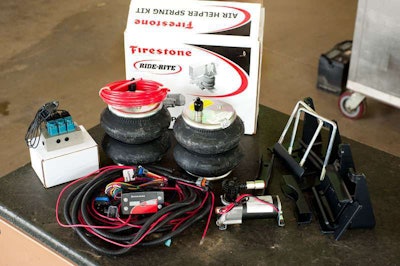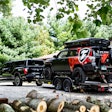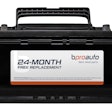
Firestone Ride-Rite air-helper springs level ride stance on heavily loaded pickups
Drop a ton in the bed of any pickup, or drop a heavy trailer on the hitch ball, and the rear suspension is going to sag like the jowls of an old bulldog.
Meanwhile the front end is going the opposite direction, making the steering and handling feel like a Bearing Sea crabber on an angry ocean.
How much suspension shift and how bad the handling is will depend on the pickup (or cab-chassis service body truck).
But all feel the effect to one extent or another when the payload edges closer and closer to the truck’s maximum carrying capacity.
The best cure for tail sag and body roll under heavy bed load conditions is upgrading the stock rear suspension with air-actuated helper-springs.
One kit I’ve found to provide excellent weight support under all types of loads, yet not interfere with the factory ride when the truck is running empty, are the Ride-Rite air helper springs from Firestone Industrial Products (www.firestonelp.com; 800-247-4337)
The basic kit retails for around $400 and is easy to install.
Truck Supply & Outfitters (http://www.trucksupplyandoutfitters.com/; 205.553.4203), located near our Tuscaloosa, Alabama offices, put the kit on a 2010 Ram 2500 4×4 in less than two hours.
A pair of the double-convoluted 6401 Firestone air-helper springs in this kit can support up to 5,000 pounds. But that doesn’t mean they increase a pickup’s ability to safely haul that much more weight.
Remember, helper-springs of any brand or style, only change the attitude of the truck, taking away the tail-down attitude and reducing the body lean in turns.
Contrary to some pickup owners thoughts, air-helper springs DO NOT increase a vehicle’s factory load carrying or towing capacity. They only level the ride.
Now all the truck’s owner has to do is add a few pounds of air to the Ride-Rite air bags to keep the rear of the Ram level as the load in the bed – or the tongue weight from a pull-behind trailer – tries to put the drop on it.










